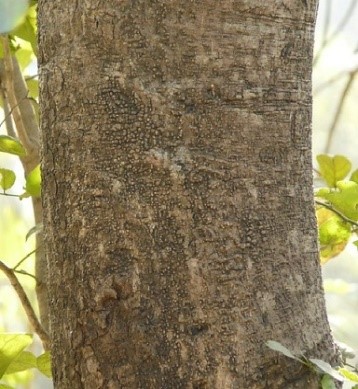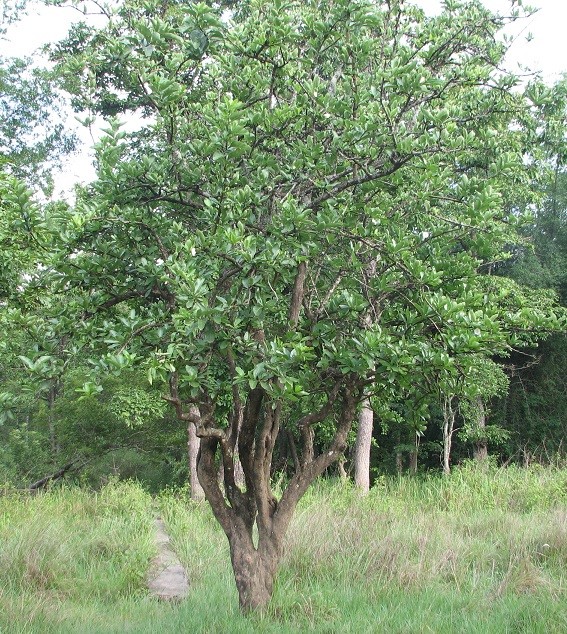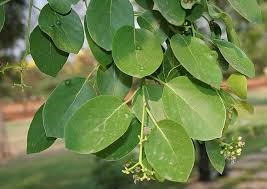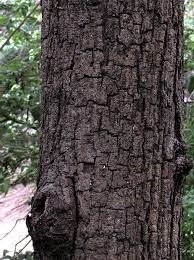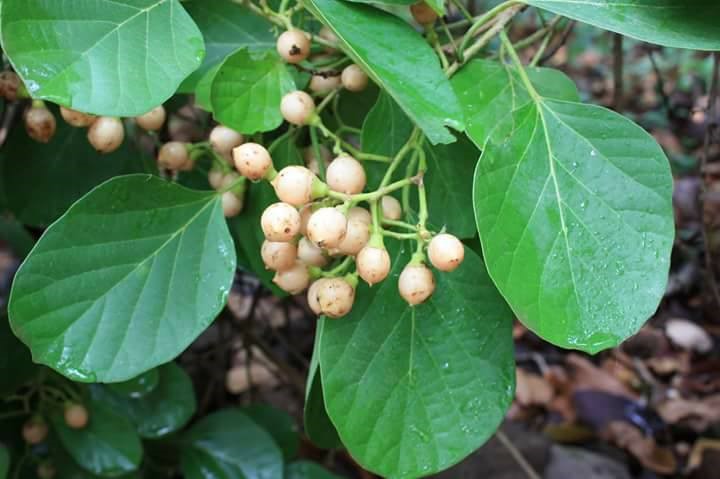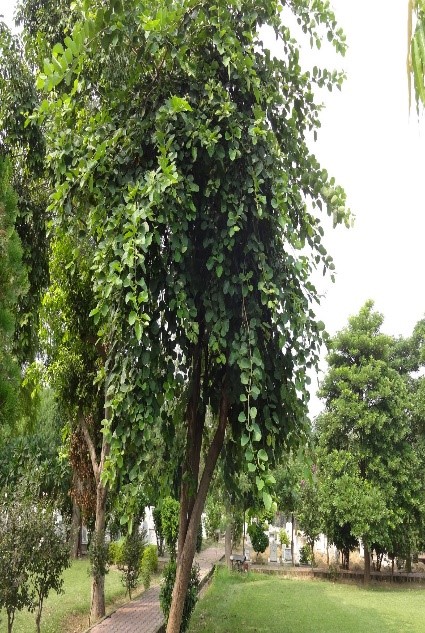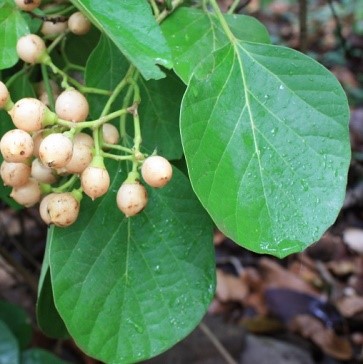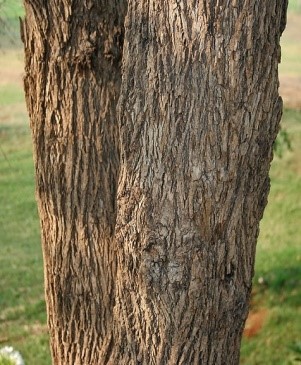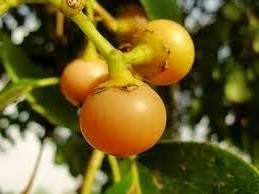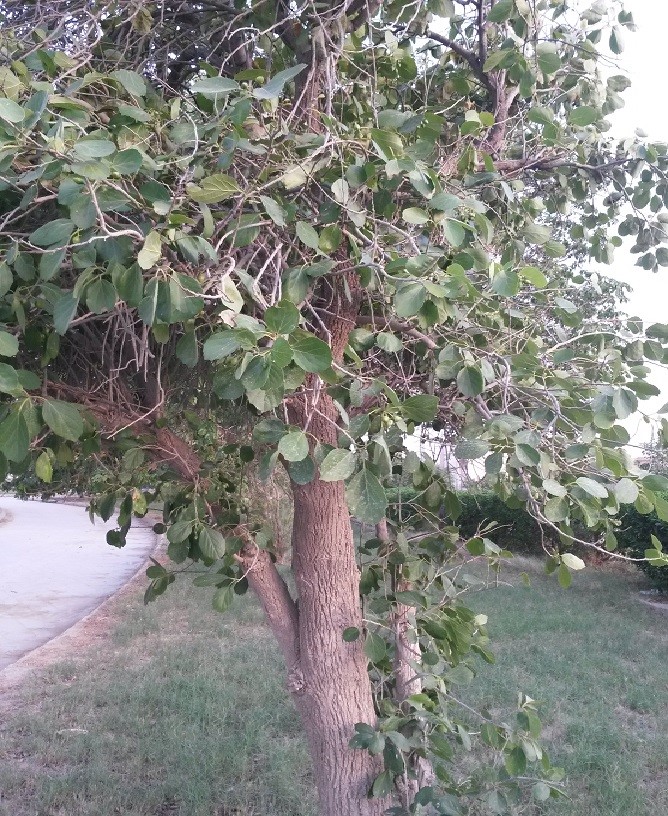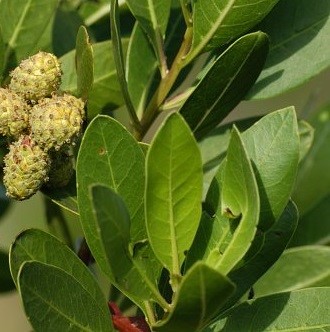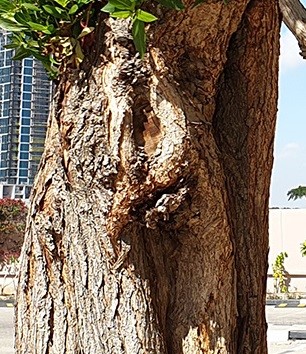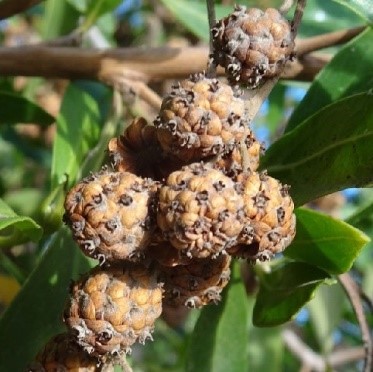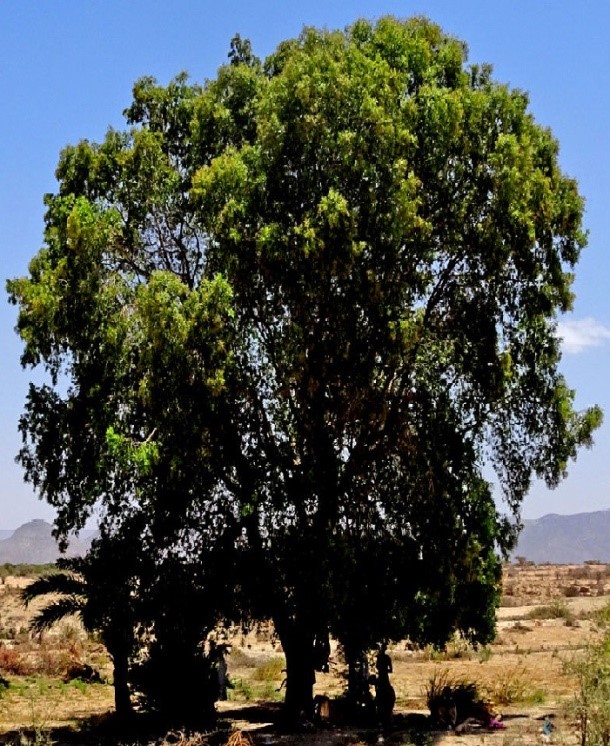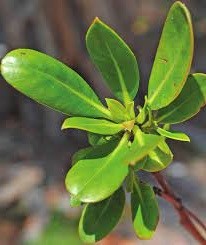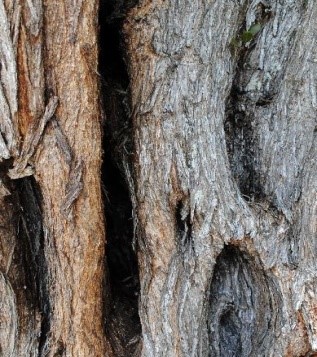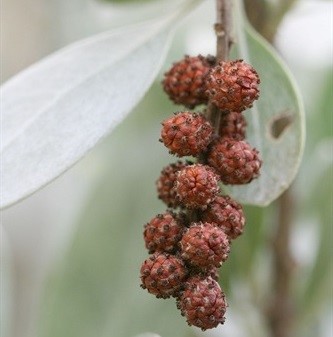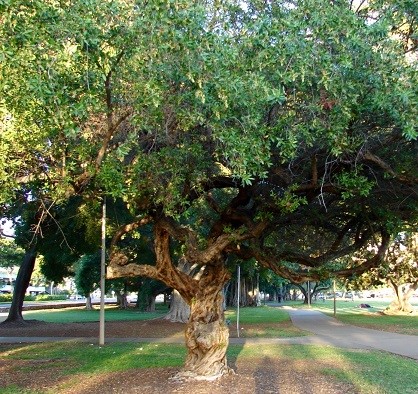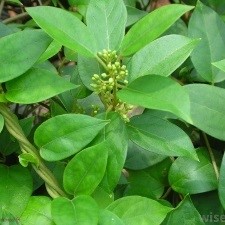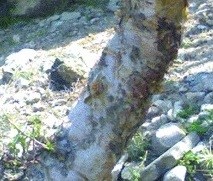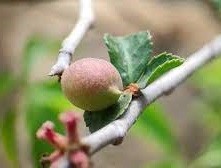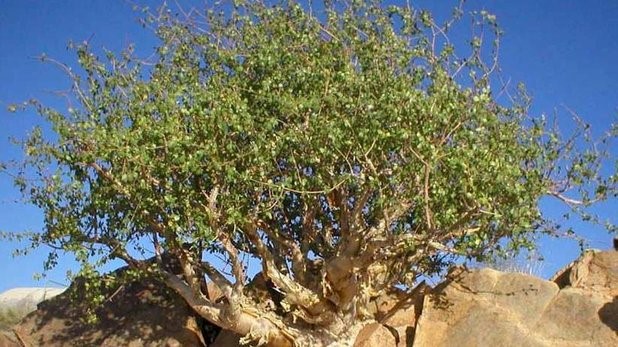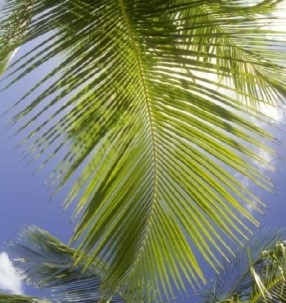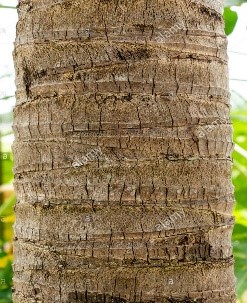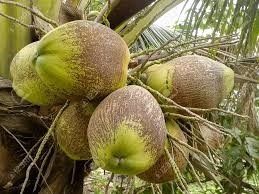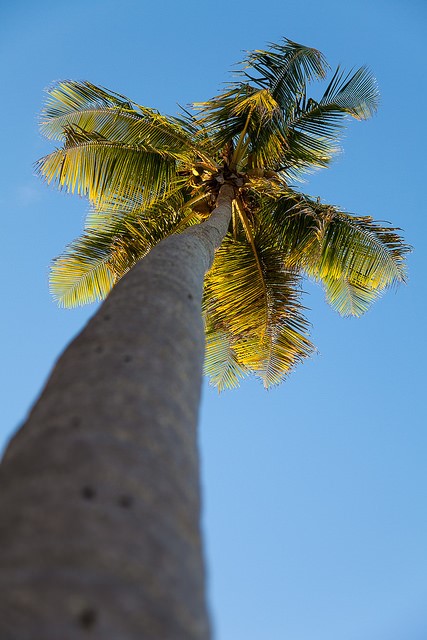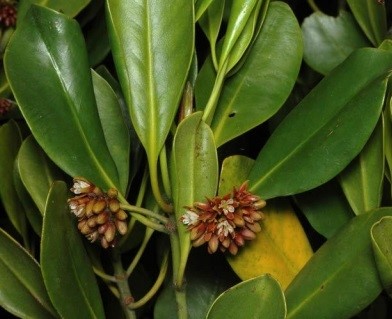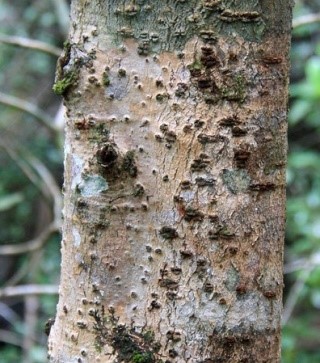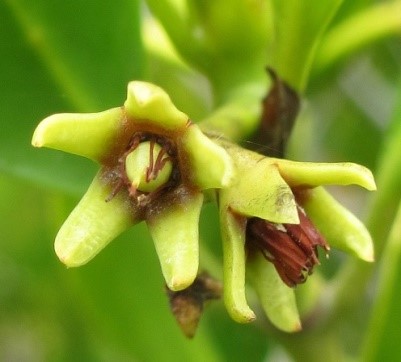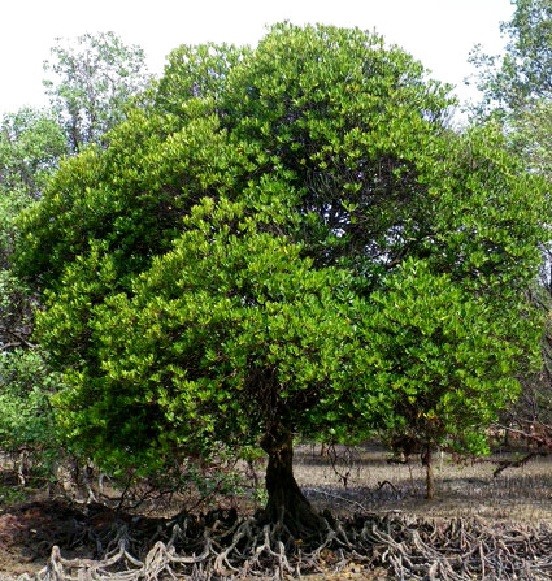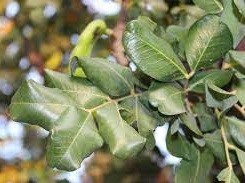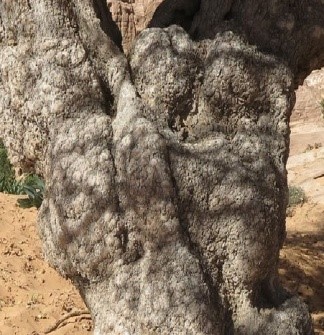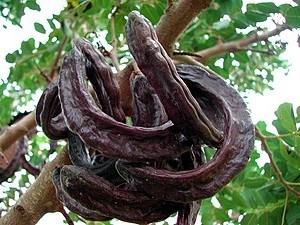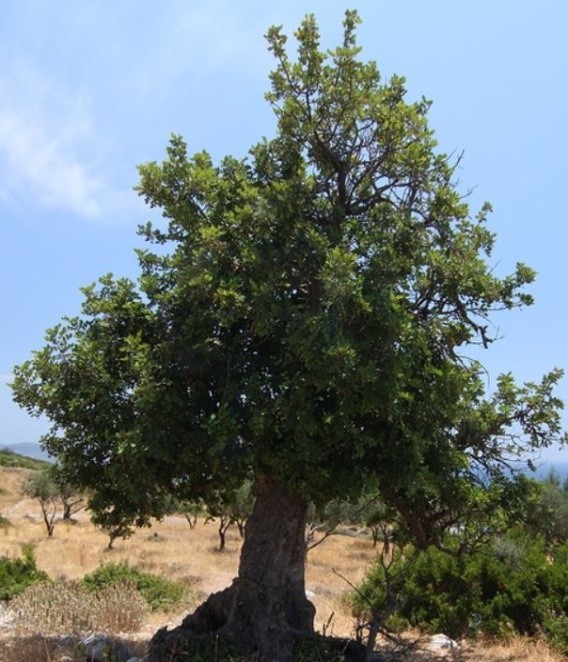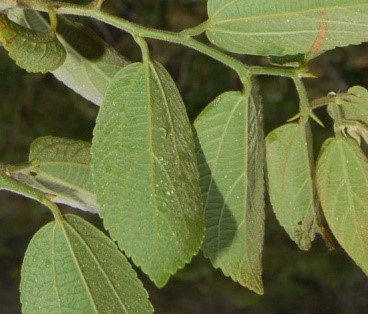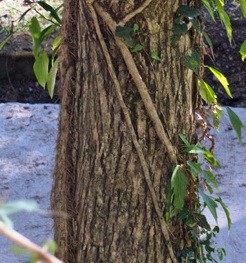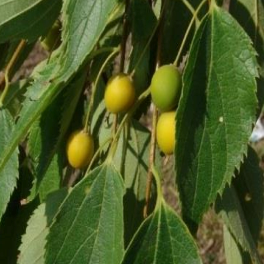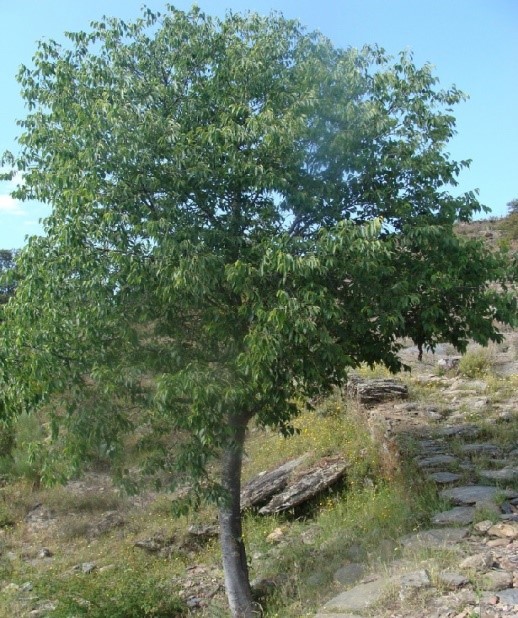Trees of Pakistan
Crataeva religiosa Linn.
Family Name: Bixaceae
Local Name : Barna
English Name : Religious tree
Description : A medium sized deciduous tree. Leaves may be trifoliate, ovate, obovate or lanceolate. They are acuminate and the base is attenuated to lateral oblique, entire, glabrous, and pale underneath. The bark is grey and nearly smooth. Flowers are 7 to 10 cm across, white, pale-yellow or reddish yellow in many flowered, lax corymbs. The 4 petals are long-clawed and ovate and occur between May and June. The berries are 2.5 to 3 cm in diameter and globose with many seeds embedded in the yellow pulp. The fruits mature between August and September. It has no known insects or disease problems of significant importance. It can be reproduced from seed or suckers. It is a fast-growing tree going up to 30 cm/yr in height. This tree regenerates profusely from root suckers and is planted for its h
Cordia obliqua Willd.
Family Name: Boraginaceae
Local Name : Lasura
English Name : Sepistan
Description : This plant is a small tree, usually grows up to the height of 3 to 4 m, but it can also reach up to the height of around 10 m. The bark of the tree is about 12 to 20 m thick. The branches are arching and contorted. Leaves are simple, alternate, elliptic, and oblong and are 4 to 9 cm long, 3 to 8 cm wide. Petioles are 1-3.5cm long. Flowers are dimorphic, sessile, lobes unequal, triangular and bisexual. Fruit is a drupe and has a single seed. The Drupes are yellow or reddish, sub spherical 2cm in diameter, with sticky mesocarp.
Cordia myxa C. B. Clarke
Family Name: Boraginaceae
Local Name : Lasura, Lasuri
English Name : Sebasten Plum
Description : A medium sized deciduous tree, 5 to 15 m tall. Leaves are simple, variable in shape, with the base rounded or heart shaped. The leaves are 7 to 13 cm long and 6 to 11 cm wide. The bark is brown and has deep fissures with numerous shallow fissures around the stem. The white yellowish-brown flowers hang in bunches. Each flower is between 0.5 to 1 cm across. The fruit, a drupe, is oblong 1 to 3 cm long. The drupe is yellowish brown, pink to black when ripe. The drupe is sweet and edible and matures in July and August. It has no known insects or disease problems of significant importance. It can be reproduced from seed. Seed will remain viable for one year. It is a very fast-growing tree. Grain is variable, texture is fine to medium. Greyish brown, reddish brown on exposure, lustre
Conocarpus lancifolius Engler
Family Name: Combretaceae
Local Name : Ghalab, Cono
English Name : Ethiopian Teak
Description : An evergreen tree which grows up to 20 m in height and 60 to 250 cm in diameter under favorable climatic conditions. Leaves are dark green, simple lanceolate. Flowers in April. Fruit formation occurs in hot weather. Insect and disease problems have not been recorded in Pakistan. It can be reproduced both from seed and by vegetative means. It seeds profusely. Height growth of 1 m/yr has been recorded in good soils with sustained irrigation. Yields of up to 21 m3/ha/yr are possible. Even grained, grey to white sapwood, Density Medium to heavy with a specific gravity of 0.81.
Conocarpus erectus
Family Name: Combretaceae
Local Name : Cono
English Name : Buttonwood
Description : This plant is a dense multiple-trunked shrub, it is 1 to 4 m tall, but can grow into a tree up to 20 m or more tall, its trunk is up to 1 m in diameter. The bark of the plant is thick and has broad plates of thin scales which are grayish brown. The leaves of the plant are alternately arranged and about 2 to 7 cm long and 1 to 3 cm broad, leaves are dark green and shiny on top, and paler with fine silky hairs underneath, and have two salt glands at the base of each leaf. The fruits have button like shape and are 5 to 8 mm diameter. The fruit is a cluster of red to brown, small scaly and are 5 to 15 mm long. The seed heads burst when ripe.
Commiphora mukul
Family Name: Burseraceae
Local Name : Gughral
English Name : Gugal Gum
Description : This plant is a shrub or small tree, reaching a maximum height of 4 m, it has thin papery bark. The branches of the plant are thorny. The leaves are simple or trifoliate. The leaflets are ovate and are up to 1 to 5 cm long and 0.5–2.5 cm broad and are irregularly toothed. It is gynodioecious which means some plants bearing bisexual and male flowers, and others with female flowers. The individual flowers are red to pink in color, with four small petals. The small round fruit are red when ripe.
Cocos nucifera
Family Name: Aceraceae
Local Name : Naryal/ Khopra
English Name : Coco Nut
Description : This plant is the only living species of the genus Cocos. It is one of the most useful trees in the world and is often referred to as the "tree of life". Trees grow up to 30m tall and can yield up to 75 fruits per year, with pinnate leaves 4-6m long, and pinnae are 60-90cm long; old leaves break away cleanly, leaving the trunk smooth. The fruit is a drupe, not a true nut, it has three layers: the exocarp, mesocarp, and endocarp. The exocarp is the glossy outer skin, usually yellow green to yellow brown in colour. The mesocarp is composed of a fiber, called coir, which has many traditional and commercial uses. Both the exocarp and the mesocarp make up the "husk" of the coconut, while the endocarp makes up the hard coconut shell. The endocarp is around 4mm thick and has three
Ceriops tagal (Perr.) C.B. Rob.
Family Name: Rhizophoraceae
Local Name : Kirrari
English Name : Tagal Mangrove
Description : A small to medium, evergreen tree 5 to 15 m tall with a diameter of 20 to 45 cm. The crown is spreading and may be brush like. Roots may be stilted with knees 20 to 30 cm high. The leaves are simple, pointed at the base with wavy (entire) margins. The thick, leathery leaves are in opposite pairs, shiny green and hairless on the tops and yellowish green underneath. The bark is light to dark grey to reddish brown, smooth or with irregular fissures. The inner bark is orange or reddish. There are 4 to 5 small flowers to a cluster. They are yellow green with white petals. The flowers bloom between July and September. The fruit is a berry, egg shaped 1.5 to 2.5 cm long and leathery. The seed matures between August and October. It will coppice. It has no known disease or pest problems
Ceratonia siliqua Linn.
Family Name: Leguminosae
Local Name : Sada Sabz
English Name : Carob Tree
Description : A small evergreen tree. The leaves are compound with leaflets paired in groups of 3 to 5. The leaflets are arranged opposite each other on the main axis of the leaf. Leaflets are 3 to 5 cm long. The flowers occur in small bunches 5 to 7 cm long. Each flower is very small and greenish in color, appearing between October and November. The pods are large 7 to 30 cm long and 1 to 2 cm wide. The pods are thick and turgid. Seeds are embedded in the pulp within the pods. Pods mature in December. It can be reproduced both from seed and by vegetative means. The seed will remain viable for at least 5 years if stored in cool, dry conditions. Seed could be obtained from Pakistan Forest Institute, Peshawar where it has been planted in small blocks. A rather slow growing but excellent fodder
Celtis eriocarpa Decne.
Family Name: Ulmaceae
Local Name : Batkhar
English Name : Nettle Tree
Description : A moderately fast growing, medium to large sized, deciduous tree. It reaches heights of 9 to 18 m with diameters of 6 to 9 cm. Mature trees have large crowns and a buttressed base. The leaves are simple and alternate. They are 7 to 12 cm long, are tough, leathery, oval shaped and pointed. The bark is blue-grey smooth, with horizontal ridges and round swellings. The small, pale yellow or greenish flowers may be perfect (both sexes) and imperfect (one sex) on the same tree. They occur on the new shoots before the new leaves appear. The fleshy fruits are round 1 cm in diameter. The fruit is green turning to yellow then to blue-black when dry. It flowers between February and May and its fruit matures between April and September. It appears to be disease and insect free. It is reprod

